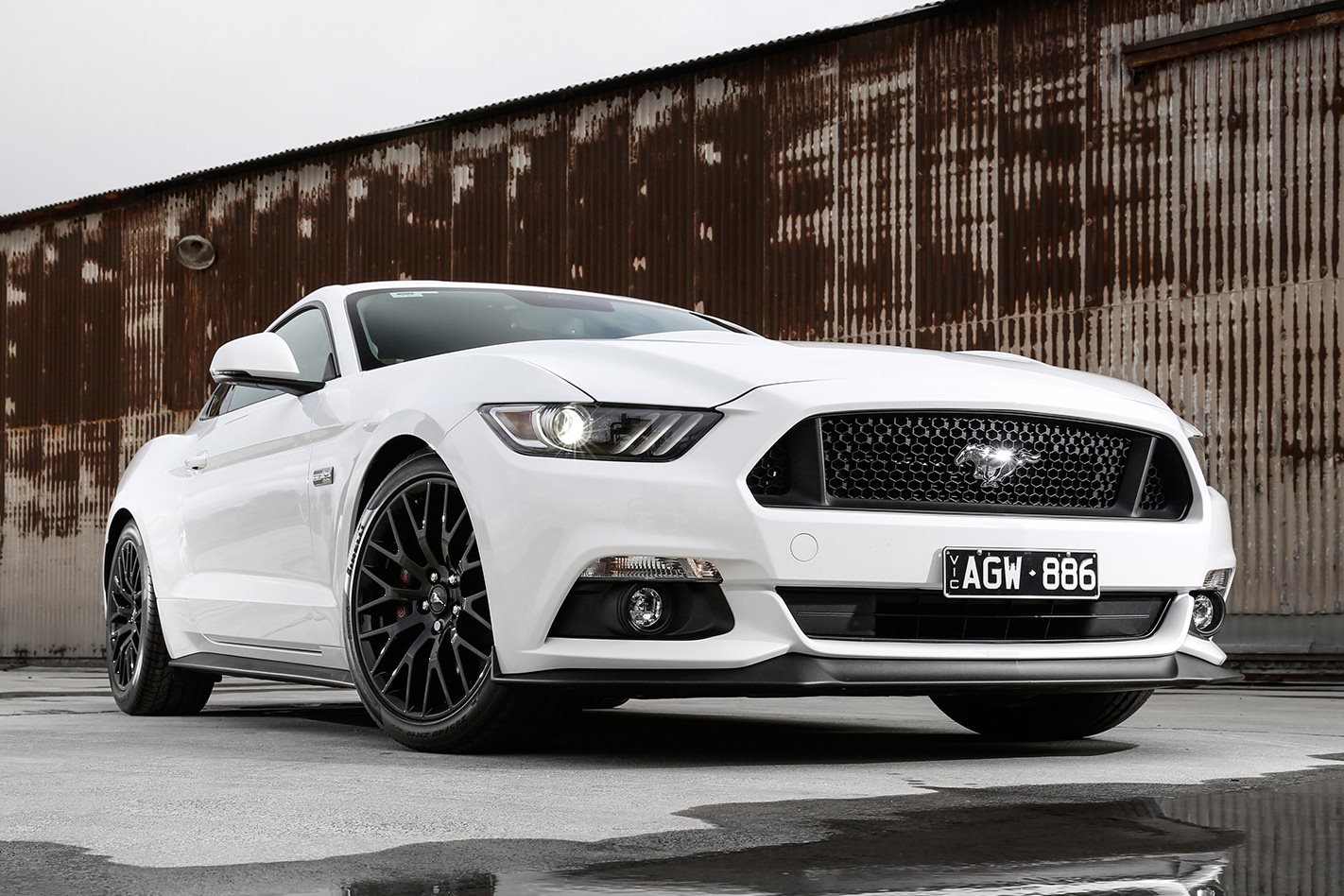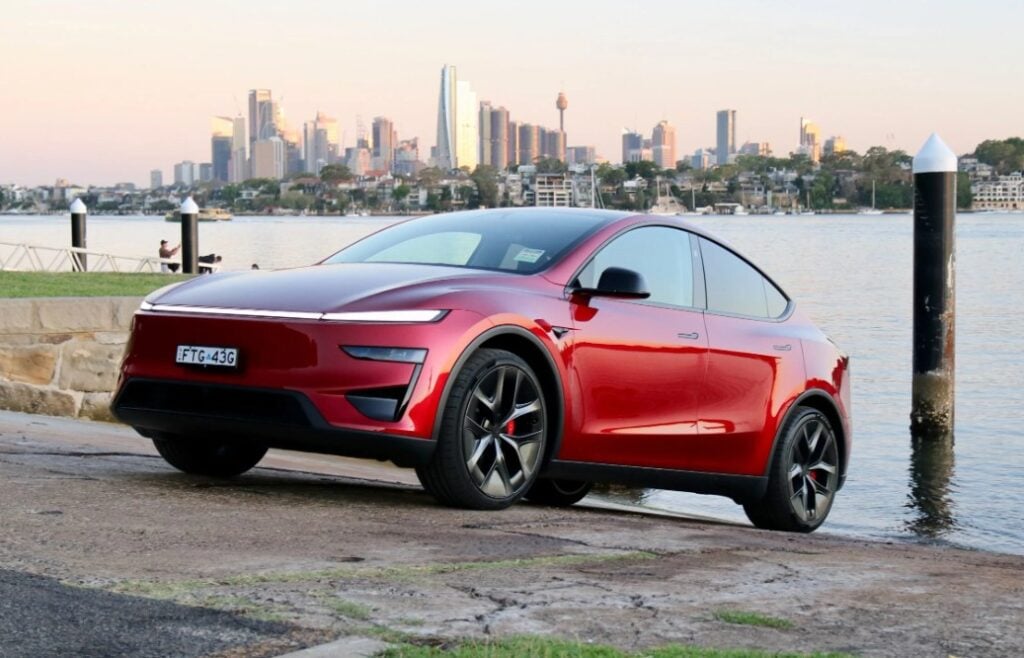It’s a pretty bleak sort of June day up at Heathcote Park Raceway.
A damp fog is still clinging to the higher hills and even though the sun is trying to cheer me up directly overhead, it’s a mean, watery sort of sunshine. Like a cake let down by too-thin icing. Weather-girl/celebrity chef stuff out of the way, this also means the Heathcote hotmix is colder than a well-digger’s arse. On the flip-side, the air is cold and we all know how much supercharged engines love that. Yin. Yang. Take it as it comes, Grasshopper.
So, pull the Mustang’s T-bar into Sport, flip the driving mode to Track, spool the engine up on the brake a little and then squeeze the throttle so that it hits the floor about the same time as the tranny hits second. My self-control loses the fight with my foot just as the tyres lose their battle with torque.

Fourth gear slots home and I’m vaguely aware of the little numbers flashing up on the Driftbox screen, telling me that I’ve covered 400m and I should probably back off now to avoid winding up in the next parish (Axedale, if I’m not mistaken).
I still have eyes like dinner plates as I haul the ’Stang down without initiating a tank-slapper in the process, but even then, I’m starting to process what just happened. I know, for instance, that a stock Mustang GT will cover the first 400m of a decent surface in about 13.4 at around 175km/h. So, I’m thinking along the lines of maybe a high-12 from this car. But my first glance at the Driftbox readout has me swearing out loud to nobody in particular.

Yet, on the standard Mustang GT hoops it was born with and on which it just ran that 12.1, you’re looking at a car that not only complies with all ADRs (we’ve seen the paperwork) but also carries a full Ford Performance Parts driveline warranty. What’s going on here? Two things: forced induction and Rob Herrod. Not necessarily in that order.
Rob Herrod you already know. He’s the love-child of Henry Ford and NASA and has been cranking out seriously quick Ford-badged product since he was tricking up his own daily drivers and having the neighbourhood boys asking him to do the same to their rides.

The process involves stripping the V8 down to the valley, machining off some bosses and bulges here and there and then bolting the 2.3-litre Eaton twin-screw pump in place. It’s not a simple drop-in on the Coyote-equipped Mustang either, as the droop of the snoot requires the blower to sit very low.
Herrod reckons the blower alone takes around 12 or more hours to fit. The kit still allows for the intercooler directly under the Eaton, so the low bonnet doesn’t complicate things permanently. There’s also a cat-back exhaust as part of the deal with a few clever heat shields in the mix and a Ford Performance Parts tune for the ECU.
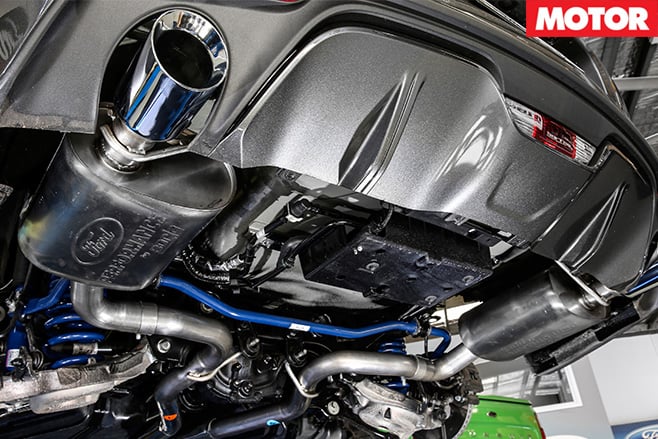
The end result of all this is 450kW at the tyres which, if you’re as old as me, works out to a neat 600 horsepower at the treads – or 507kW at the crank, reckons Herrod. That’s on a boost-max of about six psi, so there’s still plenty of headroom in this madhouse.
Herrod also includes in this package – dubbed the Compliance Pack – a set of slightly lower, stiffer springs, taking the price of the pack to $21,500.

The solution is to dig a little deeper and opt for the S550 Mustang Handling Pack (again from the FPP catalogue), which gets you some altered rear suspension bushes, a pair of fat sway-bars and a more serious set of dampers at each corner. You’re still in and out in under $25K, but trust me, those dampers really turn the ride quality around and give the car back its svelte.
In fact, it feels almost like a standard car in ride-quality terms, yet it’ll hurtle through bumpy corners with no dramas. The steering retains the fairly natural feel of the stock Mustang GT set-up and the sense as you look out over that long, long bonnet that you’re sitting more or less over the back axle.
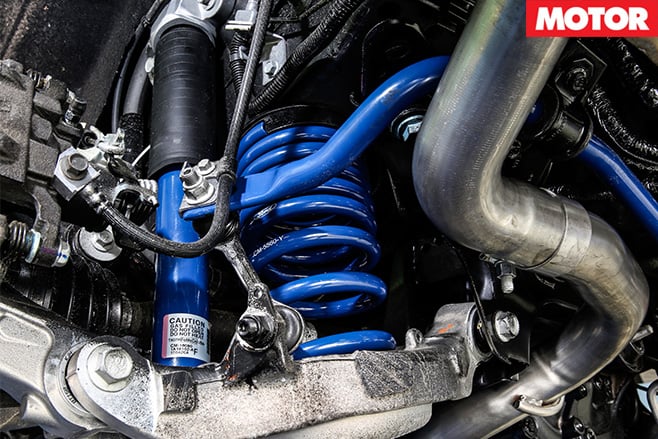
In fact, for what is essentially a big car, you can get it to flow from one corner to the next pretty well and, should you mess up and wash off too much speed, that monster engine will bail you out. Mess it up the other way and the stock ’Stang stoppers are well up to the job. We managed a very tidy 35.8m haul-down from 100km/h.
What’s even nicer about the way this car feels is that the modified engine is a bit like the suspension tune: it feels amazingly stock to drive normally and it’s only when you really plant the boot that it reveals its ferocity. Thanks to that gear-specific boost mapping, there’s none of the unanticipated axle-twisting, tyre-frying antics that many a 700-horsepower car would otherwise have. Which is not to say it isn’t hellishly fast, rather that the throttle calibration and power delivery add up to a car that’s easy and predictable to drive.

There’s not even a single trace of blower-whine and absolutely no hunting or pogo-ing at part throttle. But then, when you do start beating on it, the Coyote has a top-end rush that Han Solo would recognise.
Even the cat-back doesn’t make the car nasty in any way. Sure, there’s a bit more aural interest, but it never drones on the freeway or threatens to give Officer Dibble another reason to pull you over.
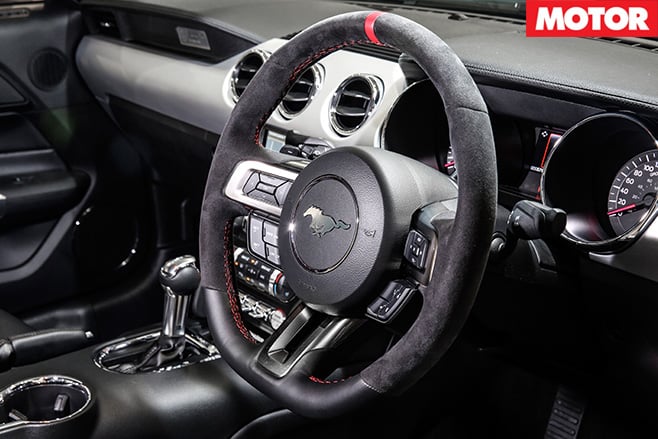
We drove two versions of the Herrod car: a manual and an automatic. While the manual is probably more entertaining (speaking personally), the auto was definitely the quicker over the 400m. Where the auto pasted down consistent 12.2s and that one banzai 12.1, the best I could do with the manual was 12.6 at 196.7km/h.
That terminal velocity strongly suggests that there’s a low-12 in the manual and believe it or not, I was well and truly into fifth gear before the quarter-mile was up. But the manual just doesn’t 60-foot like the auto and there goes that half a second.

4.5 OUT OF 5 STARS
LIKE: OE-feel, only with masses more go DISLIKE: Won’t win any interior awards
SPECS: Body: 2-door, 2-seat coupe Drive: rear-wheel Engines: 4951cc V8, DOHC, 32v, supercharged Bore/stroke: 92.2 x 92.7.0mm Compression: 11.0:1 Power: 440kW @ 6800rpm at the wheels Torque: 954Nm @ 3600rpm at the wheels Power/weight: 300kW/tonne (approx) Transmission: 6-speed automatic Weight: 1813kg (est) Front suspension: Struts, anti-roll bar Rear suspension: Multi-links, anti-roll bar L/W/H 4784/1916/1331mm Wheelbase: 2720mm Tracks: 1582/1655mm (f/r) Steering: electrically-assisted rack-and-pinion Front brakes: 380mm ventilated discs, 6-piston calipers Rear brakes: 330mm ventilated discs, single-piston calipers Wheels: 19.0 x 9.0-inch (f); 19.0 x 9.5-inch (r) Tyres: 255/40 R19 (f); 275/40 R19(r) Pirelli P-Zero Price as tested: $83,490

